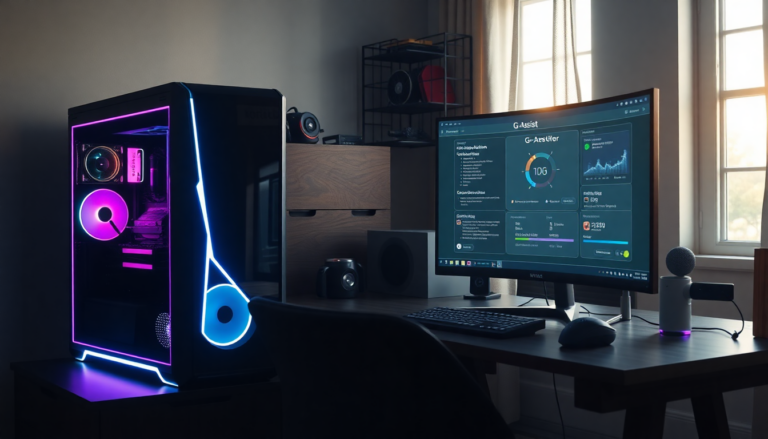Argomenti trattati
Nvidia’s G-Assist has recently made waves in the gaming world, particularly with its focus on artificial intelligence. This experimental software aims to support gamers by analyzing their systems and offering optimization advice. But while the concept is promising, G-Assist encounters several hurdles in the real world. Let’s dive into how it functions, what users are saying, and the performance of this fascinating yet imperfect tool.
An Introduction to Nvidia’s G-Assist
Launched in its experimental phase, Nvidia’s G-Assist is a standout example of a major gaming company embracing AI technology. Marketed as both a chatbot and diagnostic tool, G-Assist is designed to enhance the gaming experience by fine-tuning system settings and boosting performance. It’s specifically tailored for users with desktop RTX 20, 30, or 40 series graphics cards, and you can easily download it through the Nvidia app.
Once installed, activating G-Assist is as simple as hitting a keyboard shortcut. Just press ‘Alt + G’, and the chat interface pops up, ready to tackle your gaming-related questions. However, many early users have reported mixed results, with the tool’s performance often feeling inconsistent and frustrating when trying to improve their gaming experiences.
Currently at version 0.1.9, G-Assist is still in its infancy and comes with the label “experimental.” Nvidia has announced plans for future development, including a hackathon aimed at plugin enhancements. While users are eager to see how the tool develops, the initial feedback raises concerns about its immediate usefulness.
Testing G-Assist: Mixed Results
During my testing of G-Assist, I encountered several issues that underscored its current limitations. For example, when I asked the tool to optimize my setup for the game Black Myth: Wukong, it confidently declared that optimization had been successfully completed. But when I pressed for specifics on what changes had been made, G-Assist could only offer a vague response, ultimately revealing that no real optimizations had taken place.
While G-Assist did suggest updating to a specific Nvidia driver version—which was generally good advice—it turned out to be outdated and left me confused about the latest updates. My attempts to resolve issues with game performance were met with resistance from the bot, which failed to recognize that I was actively playing the game.
In further tests with other titles, such as Red Dead Redemption 2, G-Assist struggled to function as intended. The shortcut to access the tool became unresponsive, forcing me to restart the application. Even after restarting, the tool faced delays in initialization, consuming significant resources without providing any meaningful assistance. These experiences highlighted a substantial gap between what G-Assist is supposed to do and its actual performance.
Conclusion: Room for Growth
While Nvidia’s G-Assist holds an exciting vision for AI-assisted gaming, the execution falls short of expectations. Users looking for immediate performance enhancements may find G-Assist more frustrating than helpful. The chatbot’s current inability to deliver accurate, timely advice and its tendency to malfunction during gameplay detract from its potential. However, with continuous development and refinement, there’s hope that G-Assist could become a more dependable tool for gamers.
As the gaming industry increasingly integrates advanced technologies, Nvidia’s G-Assist serves as a reminder of the obstacles that accompany innovation. For the time being, those seeking optimization might be better off relying on traditional methods and tools while keeping an eye on future updates from Nvidia, hoping for a more effective G-Assist experience.

